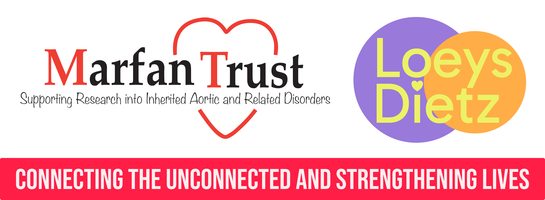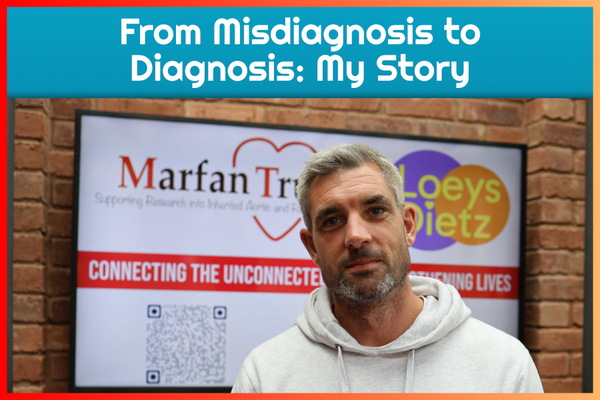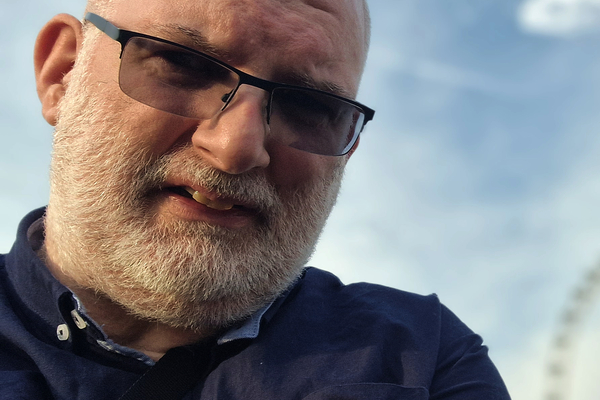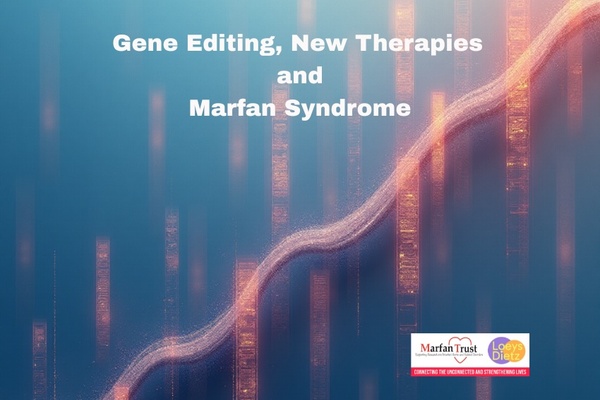Permeating the generations, Marfan syndrome repeats itself and can form familial patterns. But these patterns can be anticipated and prevented. Gareth Owens, leader of the THINK AORTA campaign and Chair of the national patient charity Aortic Dissection Awareness UK & Ireland, experienced an aortic dissection at the same age his father had many years earlier. After living through extensive surgery to tell the tale, Gareth is an ardent advocate of increased awareness and effective surveillance, knowing that the two combined will prevent his son and other Marfan folk from going through what he did.
[Gareth pictured with Victoria of the Marfan Trust at the Science in Paris conference]
by Gareth Owens
45 years ago, my Dad suffered an aortic dissection. He was taken to hospital by ambulance in the middle of the night. I visited him there once or twice, but a week later he died. We buried him on Christmas Eve. I was 11 years old. It turned out his aortic dissection and premature death aged 49 were caused by Marfan Syndrome. Marfan Syndrome is a deadly genetic disease that weakens the body’s connective tissues, affecting the eyes, lungs, joints and heart. I inherited it from my father.
On 23rd March 2016, aged 50, I suffered an aortic dissection. I was taken to hospital by ambulance. Fortunately, from the moment I keeled over in the pub with a tearing pain from my chest to my groin, I knew what was happening. I was already shouting ‘Marfan Syndrome’ and ‘aortic dissection’ while my friends made the 999 call from the pub. Awareness makes a huge difference. Up to 50% of people with an aortic dissection don’t make it to hospital. In my case, within minutes, two Metropolitan Police officers arrived, trained in cardiac resuscitation and equipped with a defibrillator. Shortly afterwards the ambulance arrived and whisked me off to the Royal London Hospital.
They gave me morphine for the pain and relayed the aortic dissection message to the A&E doctors, who were ready when we arrived. Within 30 minutes I was having a CT-Aorta. This showed that my aorta was dissected from the left sub-clavial artery, which supplies blood to my left arm, all the way down and beyond the bifurcation in my groin, where the aorta splits into the two iliac arteries taking blood to my legs. I phoned Dr Child from my ICU bed for advice.
After I was stabilised, I was transferred by ambulance to Barts Heart Centre in central London, where I had major surgery to repair my aorta. I had a second major operation a year later to complete the job. I owe my life to awareness of aortic dissection in Marfan syndrome – my own awareness, plus that of the ambulance crew and the A&E doctors. Now, as Chair of the national patient charity for Aortic Dissection in the UK & Ireland, I’m keen to work with our good friends at The Marfan Trust and spread the message that people with inherited connective tissue disorders such as Marfan Syndrome are at risk of aortic dissection.
My youngest son has inherited Marfan Syndrome. He is fortunate that his doctors have excellent awareness of the risk of aortic dissection and are taking it very seriously. His care plan includes annual echocardiograms to check his ascending aorta and the diameter of his aortic root, plus a regular MRI scan to check his descending aorta. Both are essential to effectively monitor for the risk of Type A and Type B aortic dissection in Marfan Syndrome.









